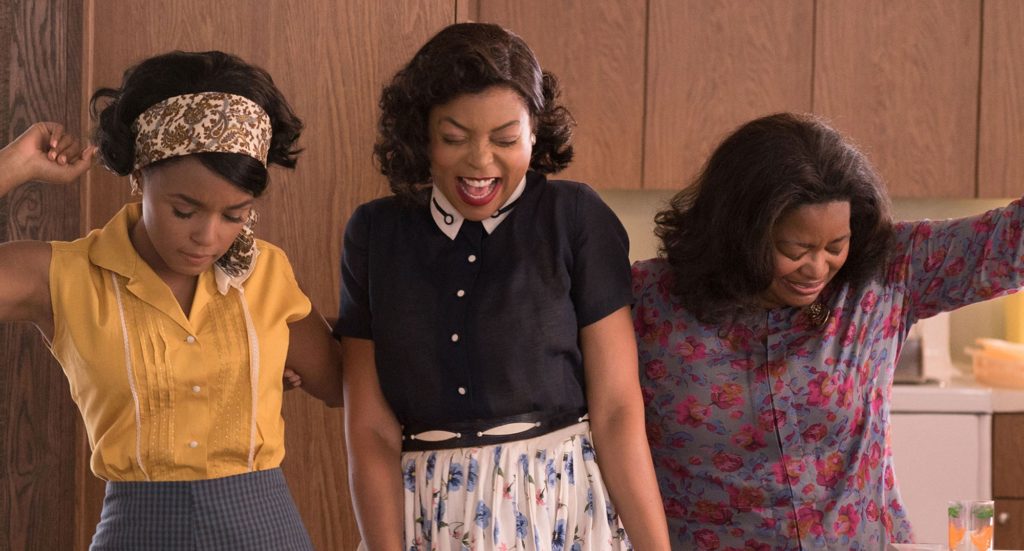 When Theodore Melfi’s Hidden Figures was released it immediately hit number one at the box office, banking a sizable $22.8 million, and surpassing Rouge One: A Star Wars Story by nearly a million dollars. Even more remarkable was that Figures, a story about the black female mathematicians and physicists who worked for NASA in the 1960s, was playing on nearly 2,000 fewer screens than the Star Wars beast. Not only is this impressive for a quieter Oscar hopeful, but it’s a movie fronted by females…and better yet…black females. Its success is a coup for film-making and a bold statement about what audiences want to see and what they’ll spend their dollars on.
When Theodore Melfi’s Hidden Figures was released it immediately hit number one at the box office, banking a sizable $22.8 million, and surpassing Rouge One: A Star Wars Story by nearly a million dollars. Even more remarkable was that Figures, a story about the black female mathematicians and physicists who worked for NASA in the 1960s, was playing on nearly 2,000 fewer screens than the Star Wars beast. Not only is this impressive for a quieter Oscar hopeful, but it’s a movie fronted by females…and better yet…black females. Its success is a coup for film-making and a bold statement about what audiences want to see and what they’ll spend their dollars on.
The biographical film stars Taraji P. Henson, Octavia Spencer and Janelle Monáe, who play women directly involved in astronaut John Glenn’s history-making orbit around Earth. All three actresses crush their respective roles, adding humor and heart to the Civil Rights-era film. All three, Henson’s Katherine Johnson, Spencer’s Dorothy Vaughn and Monáe’s Mary Jackson, were real-life women who aided in the ground-breaking mission, yet never received proper credit likely due to the color of their skin. Their stories remained largely untold until Margot Lee Shetterly’s non-fiction book of the same name was released in early 2016.
Not only is it important that these women’s stories finally be told, but the movie serves as a stark reminder of how life was for African Americans in the days of segregation. Henson’s Katherine Johnson can be seen running miles in heels just to get to a bathroom that “colored” women can use. We witness how their superiors and co-workers look down on them, not only because they are women, but also because of their race. The glass ceilings are shown to be almost impenetrable, as if Katherine, Dorothy and Mary should feel lucky to have a job at all. Watching their struggles, and later, their triumphs is quite emotional, as the movie shows what it’s like living in a world that’s constantly pushing them down. The story finishes as a feel-good tale, but the fact that we’re only just now spotlighting their accomplishments in the mainstream shows that we still have a long way to go.
Figures‘ box office tally is now up to just over $66 million, domestically. How many times have we heard rhetoric spouted by (male) studio executives that no one will show up for a female-fronted movie, or that women simply don’t go to the movies. Yet, according to Variety, female moviegoers comprised of 64 percent of the film’s opening weekend take. Hidden Figures has proven that (black) women can lead films and be financially successful, and this is crucially important for producers and studios to see. Success stories like this could help break down barriers in Hollywood and dictate the direction of future content that hits the big screen. The people (and critics) have spoken.
Bottom line: Go see Hidden Figures because these ladies’ stories deserve telling. They’re inspirational. Today, race and gender should no longer dictate what and who we see on the big screen, but what is the entertainment industry if not a microcosm of our society, flaws and all. But alas, no system is perfect, Hollywood or otherwise. We can only strive to do better and be better given these…peculiar times.
If last year’s #OscarsSoWhite movement didn’t get the message through, hopefully Figures served as one last reminder before those Oscar ballots were due last week: Representation matters. Grade: A



I want to see this movie.